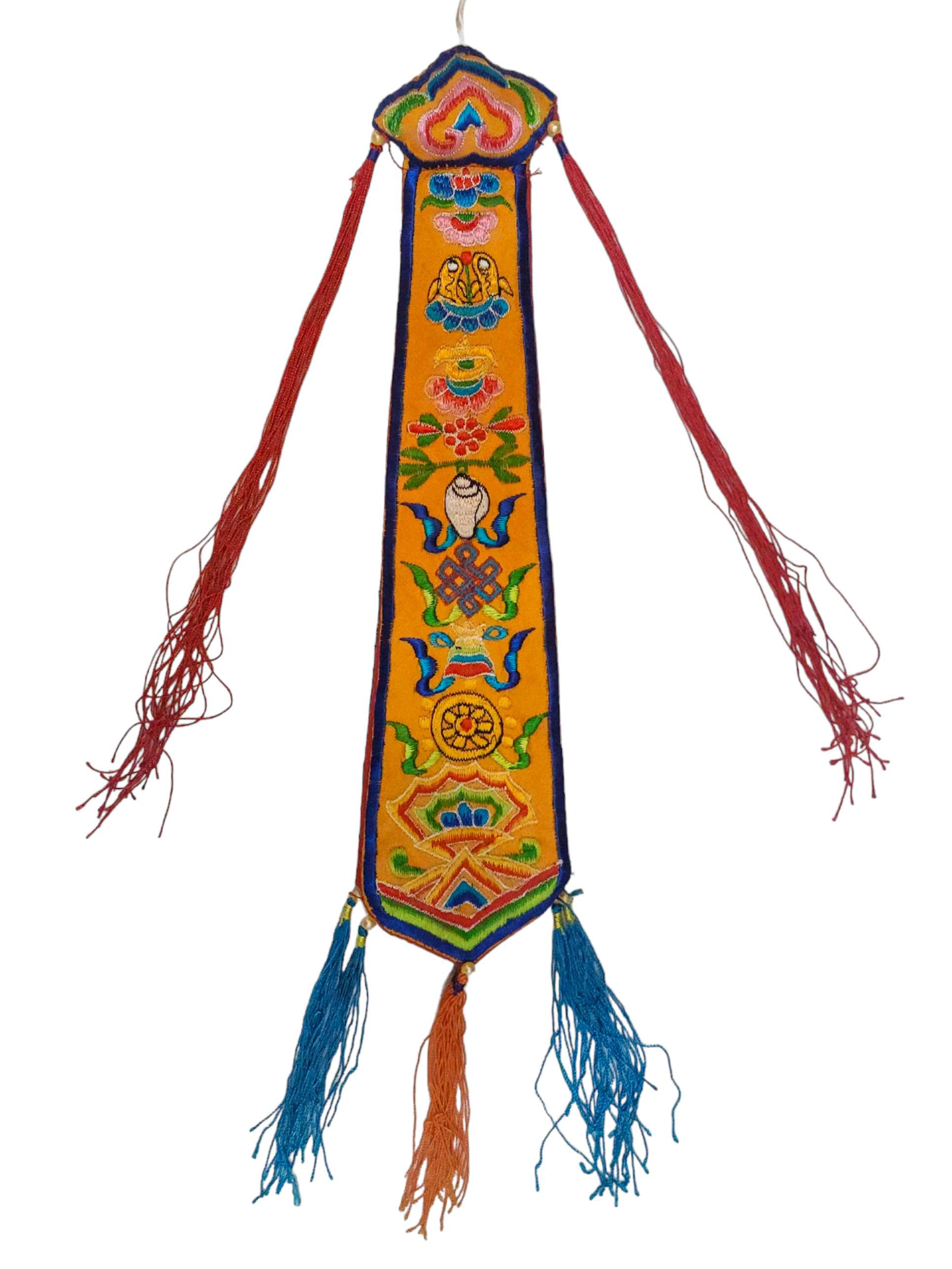 Conch The right-turning white conch shell represents the beautiful, deep, melodious, interpenetrating and pervasive sound of the dharma, which awakens disciples from the deep slumber of ignorance and urges them to accomplish their own welfare for the welfare of others |  Endless knot The endless knot denotes "the auspicious mark represented by a curled noose emblematic of love" . It is a symbol of the ultimate unity of everything. Moreover, it represents the intertwining of wisdom and compassion, the mutual dependence of religious doctrine and secular affairs, the union of wisdom and method, the inseparability of śūnyatā "emptiness" and pratītyasamutpāda "interdependent origination" , and the union of wisdom and compassion in enlightenment. This knot, net or web metaphor also conveys the Buddhist teaching of interpenetration. It is also an attribute of the god Vishnu, which is said to be engraved on his chest. A similar engraving of the Shrivatsa on the historical Gautama Buddha's chest is mentioned in some lists of the Physical characteristics of the Buddha. |  Pair of Golden FishThe two golden fish symbolise the auspiciousness of all sentient beings in a state of fearlessness without danger of drowning in saṃsāra. The two golden fishes are linked with the Ganges and Yamuna nadi, prana and carp: |
 LotusThe lotus flower , represent the primordial purity of body, speech, and mind, floating above the muddy waters of attachment and desire. The lotus symbolizes purity and renunciation. Although the lotus has its roots in the mud at the bottom of a pond, its flower lies immaculate above the water. |  ParasolThe jewelled parasol , which is similar in ritual function to the baldachin or canopy: represents the protection of beings from harmful forces and illness. It represents the canopy or firmament of the sky and therefore the expansiveness and unfolding of space and the element æther. It represents the expansiveness, unfolding and protective quality of the sahasrara: all take refuge in the dharma under the auspiciousness of the parasol. |  VaseThe treasure vase represents health, longevity, wealth, prosperity, wisdom and the phenomenon of space. The treasure vase, or pot, symbolizes the Buddha's infinite quality of teaching the dharma: no matter how many teachings he shared, the treasure never lessened. |
|
 DharmaChakraThe Dharmachakra or "Wheel of the Law" represents Gautama Buddha and the Dharma teaching. This symbol is commonly used by Tibetan Buddhists, where it sometimes also includes an inner wheel of the Gankyil. Nepalese Buddhists don't use the Wheel of Law in the eight auspicious symbols. |  Vicoty BannerThe dhvaja "banner, flag" was a military standard of ancient Indian warfare. The symbol represents the Buddha's victory over the four māras, or hindrances in the path of enlightenment. These hindrances are pride, desire, disturbing emotions, and the fear of death. Within the Tibetan tradition, a list of eleven different forms of the victory banner is given to represent eleven specific methods for overcoming defilement. Many variations of the dhvaja's design can be seen on the roofs of Tibetan monasteries to symbolise the Buddha's victory over four māras. Banners are placed at the four corners of monastery and temple roofs. The cylindrical banners placed on monastery roofs are often made of beaten copper. |
